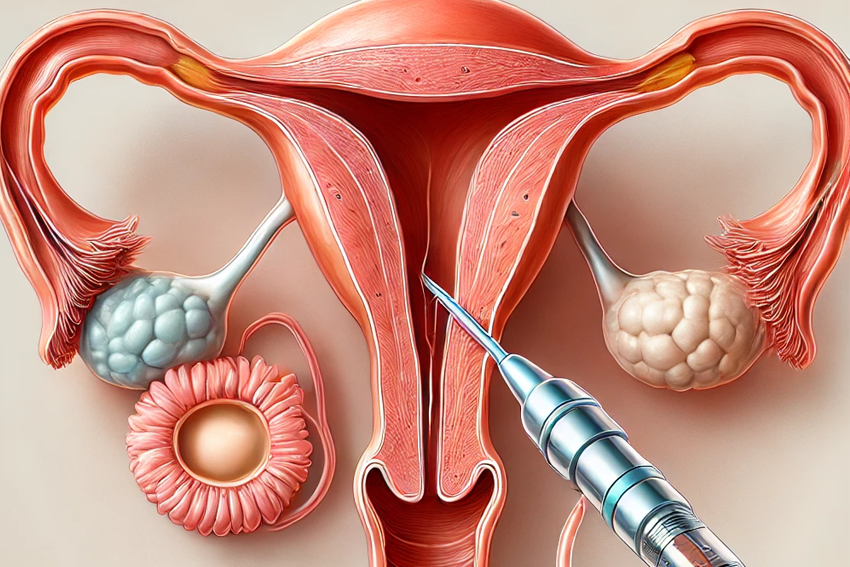When Ovulation Induction Fails: How Laparoscopic Ovarian Drilling Can Help Women with PCOD Conceive!
Polycystic Ovarian Disease (PCOD) is one of the most common reproductive disorders affecting women today. Characterized by hormonal imbalances and irregular ovulation, PCOD is a leading cause of infertility in women. While many start their PCOD treatment journey with medications like Letrozole or Clomid, not every woman responds to them.
If you’re struggling with ovulation induction failure, there’s still hope. Laparoscopic ovarian drilling (LOD) could be the next step to help you conceive naturally. It’s a proven surgical option, especially for women with Clomid-resistant PCOS.
Let’s explore how this minimally invasive procedure works, when it’s used, and how it might help restore natural ovulation in PCOD patients.
Understanding Ovulation Resistance in PCOD
PCOD disrupts the normal hormone cycle, causing elevated levels of androgens (male hormones), insulin resistance, and the formation of multiple small cysts on the ovaries. This leads to symptoms like irregular periods, acne, hair growth, weight gain, and most importantly, difficulty getting pregnant.
Ovulation induction medications such as Clomid or Letrozole are usually the first step in PCOD infertility treatment. These drugs stimulate the ovaries to release eggs. But in some women, the ovaries are resistant, and ovulation doesn't occur despite medication. This is referred to as Clomid-resistant PCOD.
What Is Laparoscopic Ovarian Drilling (LOD)?
Laparoscopic ovarian drilling is a minor, minimally invasive surgical procedure used to trigger ovulation in women who do not respond to medication. It’s a part of advanced fertility treatments for PCOD and is particularly effective when other options have failed.
Performed under general anesthesia, the procedure involves making small punctures on the surface of the ovaries using heat or laser. This helps reduce excess androgen production and restores a healthier hormonal balance, often leading to natural ovulation.
Key Benefits of LOD in PCOD Treatment
✅ Restores Natural Ovulation:
Many women begin to ovulate on their own within a few weeks of the procedure, without further medication.
✅ Improves Hormonal Balance:
LOD helps reduce androgen levels, which improves the menstrual cycle and reduces symptoms like acne and hair growth.
✅ Increases Pregnancy Rates:
For women who haven’t responded to drugs, LOD can significantly improve fertility outcomes, both for natural conception and assisted reproductive methods.
✅ Minimally Invasive, Quick Recovery:
It’s a day-care procedure with minimal scarring and a short recovery period. Most women resume normal activities within a few days.
✅ Reduces Dependence on High-Dose Fertility Drugs:
After LOD, many women require lower doses of ovulation induction medicines, reducing side effects and risks like ovarian hyperstimulation.
Is Laparoscopic Ovarian Drilling Right for You?
If you’ve tried ovulation induction with Letrozole or Clomid without success, and your PCOD remains unmanaged, your fertility doctor may recommend LOD. It's typically considered when:
- You're Clomid-resistant
- You have high levels of LH (Luteinizing Hormone) or androgens
- You're overweight or insulin-resistant
- You've tried multiple cycles of medication without ovulation
Your doctor will evaluate your hormonal profile, ovarian reserve (AMH levels), BMI, and ultrasound results before deciding on this treatment.
Risks and Precautions
While laparoscopic ovarian drilling is safe and effective, like all surgeries, it has potential risks:
- Formation of scar tissue (adhesions)
- Potential for reduced ovarian reserve if overdone
- Mild pelvic discomfort post-surgery
Always consult an experienced fertility doctor in Hyderabad or your local area to ensure proper care. The success of this procedure greatly depends on the surgeon’s skill and the precision of the technique used.
Real Hope for Women with PCOD
At top fertility centers like Nova IVF Fertility in Hyderabad, expert fertility specialists such as Dr. Durga Vytla offer advanced, compassionate care for PCOD. Many women have achieved successful pregnancies after undergoing laparoscopic ovarian drilling when nothing else worked.
Your TTC (Trying to Conceive) journey may feel overwhelming, but you're not alone. Thousands of PCOD warriors have found success through personalized treatment plans and timely surgical interventions.
Final Thoughts: Don’t Lose Hope on Your Fertility Journey
If you’ve been trying to conceive with PCOD and haven’t seen results with ovulation induction medications, talk to your fertility specialist about laparoscopic ovarian drilling. It could be the key to unlocking your fertility potential and helping you move closer to parenthood.
Commonly Asked Questions (FAQs)
- How long after LOD will I start ovulating?
Most women begin ovulating within 4–6 weeks after the procedure. - Can I conceive naturally after LOD?
Yes! Many women conceive naturally within 6 months post-procedure. - Is LOD painful?
It’s done under general anesthesia and recovery involves mild discomfort for a couple of days. - Will I still need fertility medications after LOD?
In some cases, yes—but usually at lower doses, and with better response.
📞 Ready to take the next step?
Consult with Dr. Durga Vytla at Nova IVF Hyderabad, and find out if laparoscopic ovarian drilling could work for you.
👉 Because every woman’s health matters, and your fertility journey deserves the best care.
#PCODAwareness #PCOSWarrior #FertilityJourney #OvulationInduction #InfertilitySolutions #TTCJourney #HopeForFertility #WomensHealthMatters

